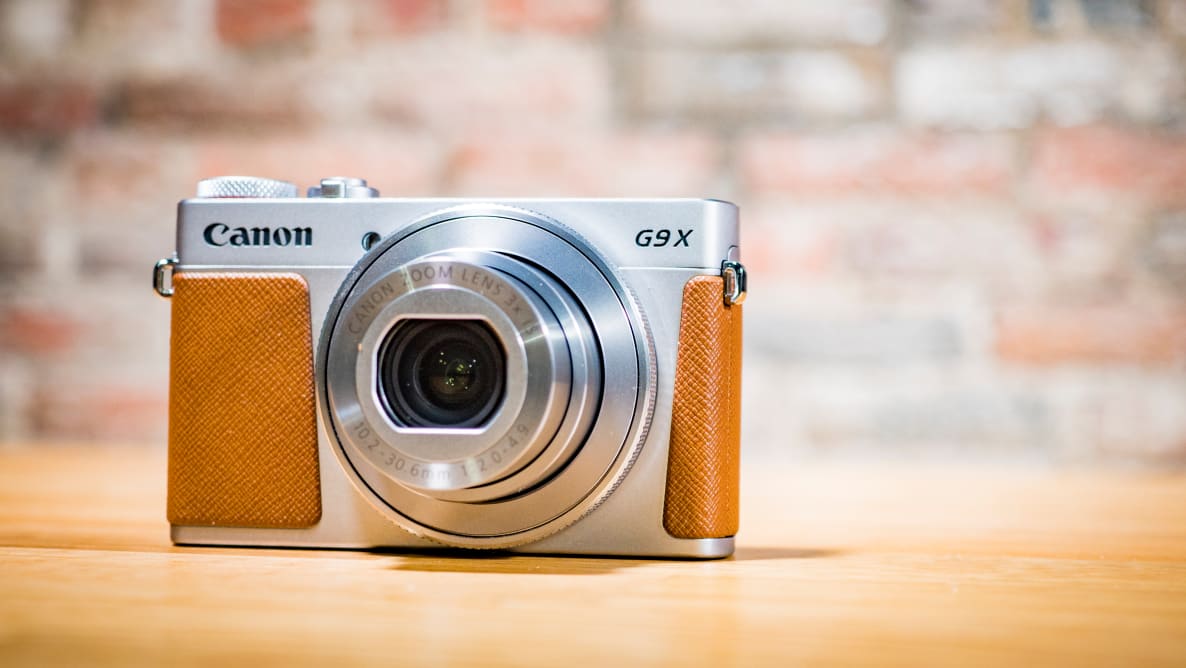Pros
-
20-megapixel sensor
-
Intuitive touchscreen
-
3x zoom lens
Cons
-
Lackluster battery life
But while phones are fantastic for what they are, they still have limitations. The biggest one is the lack of optical zoom, with only a few cameras offering even a 2x option. The Canon PowerShot G9 X Mark II (available at Amazon) isn't a perfect salve to these problems, but it does offer the comfort and reliability of a Canon point-and-shoot, as well as rock-solid image quality and a 3x optical zoom.
This camera excelled in most of our image quality tests, and everyone we handed it to found it refreshingly familiar. After all, Canon has been making some of the best point-and-shoot cameras for nearly 20 years. For anyone who wants a compact, reliable, and excellent all-around point-and-shoot, the Canon G9 X Mark II is one of the best options we've tested in the past year.
About the Canon PowerShot G9 X Mark II
The Canon PowerShot G9 X Mark II is a standard, compact point-and-shoot digital camera. It features a 1-inch type image sensor, which means it's smaller than the ones you'll find in an interchangeable lens camera (both mirrorless options like Micro Four Thirds cameras as well as larger DSLRs), but much larger than those found in "typical" point-and-shoots like superzoom cameras. It's also much larger than the sensor found in smartphones—a key reason why it does well in low light.
Here are the rest of the specs as provided by Canon:
Lens: 3.0x optical zoom (28-84mm (equivalent), f/2-4.9) Sensor: 20.1-megapixel 1-inch type CMOS Processor: Digic 6 ISO Range: 125-12800 RAW Shooting: Yes Burst Speed: Up to 8.2fps Video: 1080/60p max Electronic Viewfinder: No Rear LCD: 3-inch Touch LCD Wi-Fi: Yes, with NFC and Bluetooth Battery Life: Canon NB-13L Dimensions: 3.9 x 2.3 x 1.2 inches Weight: approximately 7.3 oz / 206g
The Canon G9 X sits in the middle of Canon's revamped point-and-shoot lineup, and is one of the entry-level versions of its higher-end G Series. You can see how the G Series models compare here.
The G9 X Mark II is generally in line with what a "high-end" point-and-shoot was a few years ago, with a large sensor and a relatively rich set of features. Though the point-and-shoot market has gone up in price (largely driven by the nearly $1,000 Sony RX100 series), the G9 X is available for right around $400 on sale.
What We Like
Easy to use controls and a dead-simple menu system
If you've used a Canon DSLR at all in the past decade, the G9 X Mark II will immediately make sense. Though compact, it features a control scheme and menu system that is nearly identical. It may be a little more complex if you're used to cheaper Canon point-and-shoots (which typically use an even simpler menu), but we don't think most people will have too much trouble.
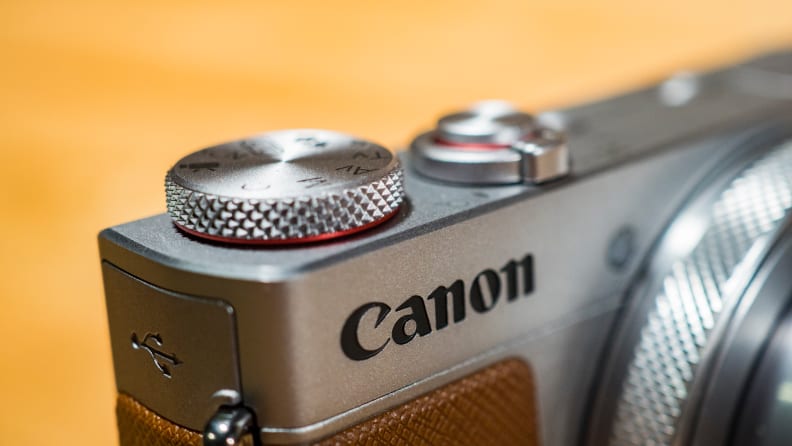
The Canon G9 X Mark II's control dials all have a satisfying knurling that makes them easy to twist.
The physical controls on the G9 X Mark II tick all the boxes you are likely familiar with, including a shutter button, mode dial, zoom toggle, as well as buttons for accessing the menu, playback functions, and an info screen. The most notable omission is the directional pad, with the G9 X Mark II (as well as its predecessor) requiring you to use the touchscreen.
While a few years ago we may have knocked the G9 X Mark II for this, in 2017 it's not a huge leap to expect your customer to navigate an interface by touch alone. It's occasionally annoying, but the camera is easy to use and should be fine for anyone who already has (or had) a Canon point-and-shoot before.
A 3x optical zoom isn't much, but it's better than your phone
One of the big reasons people still gravitate toward a point-and-shoot is the optical zoom you just don't get on most smartphones. Though dual camera phones like the iPhone 7 and 8 do provide a 2x optical zoom by including a second camera unit, it's not as simple or elegant as a true optical zoom lens.
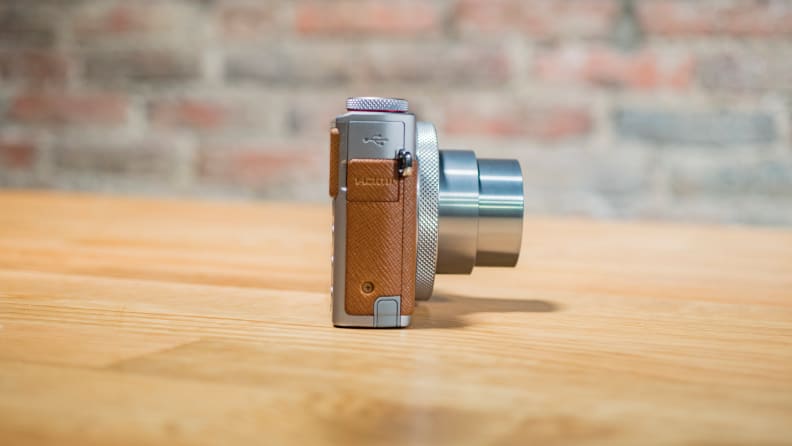
The Canon G9 X Mark II has a slim profile with just a control ring and an extended lens when turned on.
The G9 X offers a standard 3x optical zoom, giving you the option of going from a wide-angle (24mm equivalent) to telephoto (84mm equivalent). It's not a huge difference from what your phone will offer now, but it's something. Those seeking more zoom should investigate Canon's SX730 HS, which offers a whopping 40x optical zoom in a body the same size as the G9 X Mark II. Its image quality is understandably worse, but it also costs around $50 less, too.
Those who want more zoom but don't want to sacrifice image quality should look at the Panasonic ZS100, which offers the same size image sensor as the G9 X Mark II, a 10x optical zoom, and an electronic viewfinder for around $100 more.
Image quality that still excels in many low light situations
The Canon G9 X Mark II employs a standard 1-inch type image sensor to great effect. Sensors like this are physically larger than those found in more entry-level point-and-shoots and in smartphones. That means you can have a 20-megapixel sensor that captures lots of fine detail while also having large individual pixels.
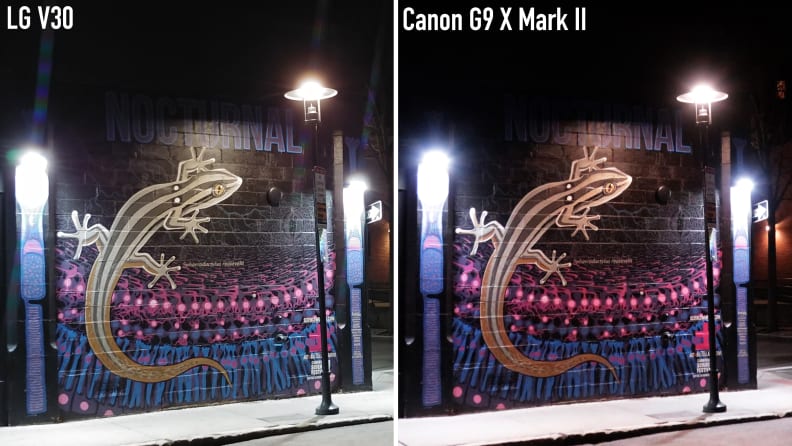
The Canon G9 X Mark II is excellent in low light, but a flagship-quality phone like the LG V30 can nearly match it in scenes like this.
Larger pixels more efficiently gather light with every shot, meaning you get low light photos with less noise. In our tests we see this all the time with the G9 X Mark II, but particularly in low light. When there's not much light coming in, cameras amplify what they capture to make it more visible.
That noise reduction can cut into the overall image quality, as seen in the example above. At ISO 6400 there just isn't much difference between the G9 X and a flagship-quality phone like the LG V30. The Canon is better in many ways—especially since it can use a faster shutter speed—but the resulting images aren't drastically better.
What We Don't Like
It's still pricey if you are satisfied with your phone
Look, these days most people can get by just fine with their smartphone for most photos. I have a daughter and access to a slew of professional grade cameras and even I use my phone the vast majority of the time. While the G9 X Mark II will capture better photos than what I get with my phone most of the time, there's no denying that it's a luxury for most people who are already investing in new phones every two years.
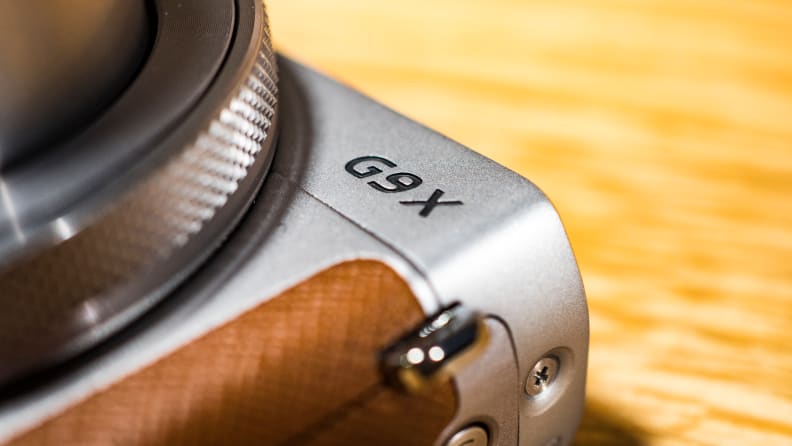
The G9 X Mark II is very similar to the original, down to the identical G9 X logo on the front plate.
And with a price point just north of $400 most of the time, the G9 X Mark II may not fit into everyone's budget—especially with the latest phones nearly matching it for image quality. The G9 X Mark II still has advantages, but you'll need to carefully weigh your options at this price point—especially because even better interchangeable lens cameras start right around $450.
There's no viewfinder
Viewfinders were once the kind of thing you'd only ever find on a high-end or bulky camera. While some Canon point-and-shoots featured tiny little view windows a decade ago, today there are point-and-shoots that offer 100% genuine electronic viewfinders that make taking photos in bright light much easier.
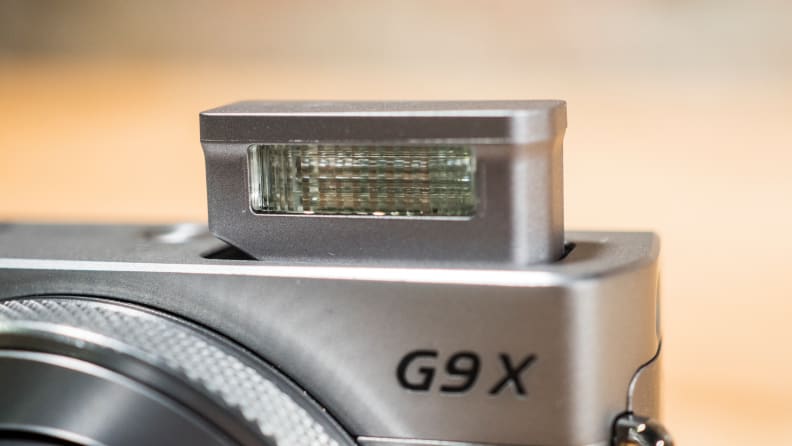
The G9 X doesn't have a viewfinder, but it does feature a pop-up flash.
The G9 X Mark II is not one of those cameras. Though nearly all the viewfinder-packing compact cameras cost significantly more money, it's still a feature that many people may miss if they opt for the G9 X II.
Older point-and-shoots are nearly as good, may be cheaper
As demand for point-and-shoot cameras has waned in the last few years, investment in their development has slowed down. That means most of today's models are essentially identical to those from the last few years. The G9 X Mark II, for example, is only marginally better than the G9 X that it's replacing.
Though some series—like Sony's RX100s—retain their value year-over-year, it's not uncommon to find top models from last year for a song online. That's particularly true of interchangeable lens models like the Panasonic GF7, an older model which offer a larger Micro Four Thirds sensor, 4K video, and the freedom of interchangeable lenses starting at right around $450.
Not much cheaper than an interchangeable lens camera
Many people shopping for a camera under $500 simply assume they can't afford an interchangeable lens model. Many start for $700 and up and then you have to consider all the accessories you may need, the potential of extra lenses, and the prospect of carrying around a larger camera.
While that's true of some models, there are multiple interchangeable lens cameras starting between $450 and $550 that give you a 3x optical zoom "kit lens" that will match the G9 X Mark II, while also offering much better image quality and the option to change lenses down the line. With extremely high-quality prime lenses available for $150-300 (depending on what kind of camera you get)—not to mention the possibility of buying a well-cared-for used setup—you can get a surprisingly high-quality kit for only a bit more than you'll spend on the G9 X Mark II.
Should You Buy It?
Yes—but only if you truly want a dedicated point-and-shoot
The popular narrative is that the dedicated camera is dead. That's simply not true. While smartphones can take care of what most people need on a day-to-day basis, there is still a very large customer base for a dead simple, high-quality camera that is compact, reliable, fast, and offers great image quality.
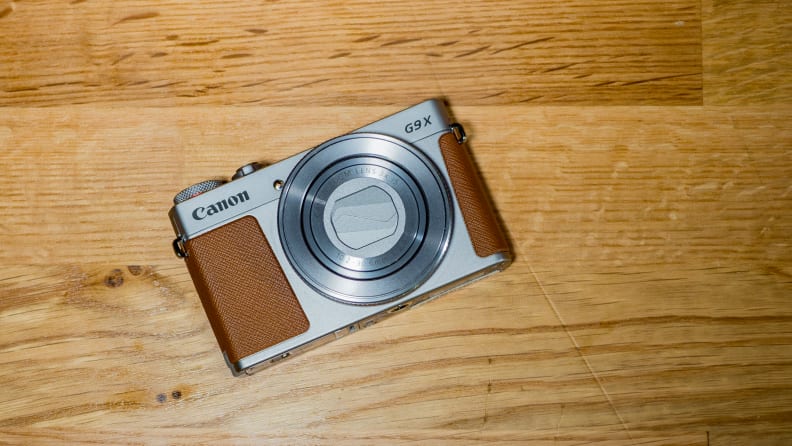
The Canon G9 X Mark II isn't perfect for everyone, but for people who prefer a point-and-shoot to their smartphone, it's a good portable option.
Particularly in low light, the Canon G9 X will hold its own against all but the best smartphones on the market. And for the phones that are just starting to match what the G9 X II can do, there is still the advantage of more tactile controls and optical zoom. Though it's obvious that a point-and-shoot is no longer a must-have gadget for most people, for certain people with certain needs—especially those traveling who would prefer a compact, dedicated camera—the G9 X is a great fit.
That said,
The $400 and up price also invites some serious competition with other cameras. In the point-and-shoot segment the next step up would probably be the Panasonic ZS100, which offers nearly identical image quality, 4k video, a 10x zoom, and an electronic viewfinder for around $550 on sale. If you want to stay within Canon's stable the G7 X Mark II and G3 X are both excellent and offer a bit more zoom, but they're typically $650 and up.
An even more compelling choice arises if you're willing to consider interchangeable lenses. The Panasonic GF7 is just as small as the G9 X Mark II but has a much larger Micro Four Thirds sensor and lets you swap lenses. It's nearly as easy to use, gets you better image quality, and you can replace the 3x kit lens any time, all in a camera that costs about $450 right now.
But for people who enjoy the comfort, reliability, and simplicity of a point-and-shoot, the Canon G9 X Mark II is hard to beat. Especially for those who have been using a Canon camera for years, the G9 X Mark II is a welcome dose of familiarity in a camera market that has otherwise changed dramatically.
Meet the tester
TJ is the former Director of Content Development at Reviewed. He is a Massachusetts native and has covered electronics, cameras, TVs, smartphones, parenting, and more for Reviewed. He is from the self-styled "Cranberry Capitol of the World," which is, in fact, a real thing.
Checking our work.
Our team is here to help you buy the best stuff and love what you own. Our writers, editors, and experts obsess over the products we cover to make sure you're confident and satisfied. Have a different opinion about something we recommend? Email us and we'll compare notes.
Shoot us an email

